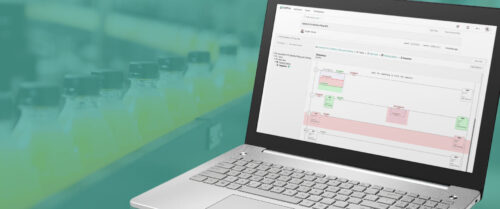Alltrista inspects home canning lids with machine vision
Alltrista Consumer Products Co., Muncie, IN, manufactures two-piece home-canning closures under Ball, Kerr, Golden Harvest, Mason, and Bernardin brand names. A critical quality check is inspecting the plastisol seal on the lid that preserves the vacuum, which ensures safe home-canned foods.
Side-by-side Omron F160 vision systems inspect two lines of lids in the space of one of the former systems.
As an early machine-vision adopter, Alltrista was using late 1980’s/early 1990’s-era vision systems to inspect lid seals. By 2001, those systems were failing and could not be readily repaired. As production rates increased, the slower processing time of the old system became an issue.According to Mike Dodson, Alltrista’s senior process engineer at the time, “The old system was heavy-duty, big and bulky, and produced a lot of heat.” It required a dedicated air conditioning unit for each controller. The air conditioning units frequently went bad and were expensive to maintain. The preliminary justification [for new vision systems] was eliminating air conditioning costs. In fact, the plant’s energy savings alone offset the total cost of new vision systems.”Todd Lee, Alltrista’s manager of quality assurance/technical services at the time, helped select Omron’s F160 vision system as the replacement quality inspection tool for lid seals. “It’s a relatively inexpensive system, but it still provides what we need. A more costly, more complicated system would have been overkill. It’s a relatively simple system” to operate. Dodson added, “The F160 menus are simple to work with. We use the defects measurement tool, primarily. [The F160 is] set upon different regions of the lid. It’s flexible in set-up… and compact.”
In application, Alltrista uses the F160 to capture an image of the lid. That image gets sent to a PLC for comparison against defect limits that have been preprogrammed by Alltrista quality control and engineering. After the PLC determines if the lid is good or bad, that status result is stored and tracked until it reaches a rejection station, where a PLC signal activates a mechanism to remove the bad lid. The F160 system inspects lids being transported from the curing oven to the final packaging area at the rate of 160 lids per minute.
Do you have experience and expertise with the topics mentioned in this content? You should consider contributing to our CFE Media editorial team and getting the recognition you and your company deserve. Click here to start this process.





